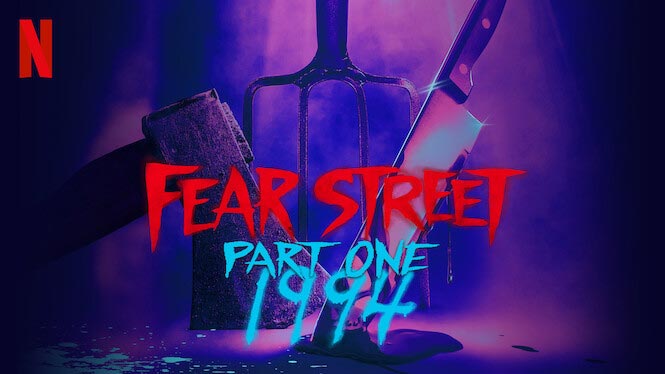Fear Street hits that sweet spot for the millennials now creating content, both pop culture and its coverage. A movie was probably inevitable—a trilogy, which is what is streaming on Netflix a week at a time, is more surprising. That the first installment is not only good, shivery fun but puts a queer couple at its center?Well, 2021 is full of surprises.
If you grew up reading about the bloody trials and travails of Shadyside teenagers in R.L. Stine’s popular series, you won’t recognize much in the films. Yes, there’s the Shadyside Mall, but these teens don’t have time for pizza dates or shopping sprees, and their parents (often well-intentioned but oblivious) don’t factor in at all. What we get from Part 1: 1994 is estranged couple Sam (Olivia Welch, recycling her Panic performance in a minor key) and angsty Deena (Kiana Madeira) trying to outrun a small cadre of undead murderers with a very specific mission.
As always, caught in the collateral damage are the wisecracking best friends—here played to perfection by Julia Rehwald and Fred Hechinger—and a younger brother (Benjamin Flores Jr.) while a sheriff lurks unhelpfully and the high school turns into a horror show.
What co-writers Phil Graziadei and Leigh Janiak (who also directed) get so right in the first installment, as they take on the series’ ethos rather than a specific installment, is the sense that once you start paying attention, you’ll realize you’ve grown up in a town pulsing with evil. Here, some of the characters are more in tune with the town’s past than others thanks to a trusty AOL dial-up connection, but they all get a crash course in history as they fight to stay alive. (Some more successfully than others.)
And though putting a queer couple front and center is depressingly newsworthy, if anything, Fear Street shows that teenage lesbians can be just as boring as their heterosexual counterparts. We never really root for Sam and Deena, though the movie practically begs us to. Their performances don’t help matters—Welch looks sullen for most of the film, even when running from a man wielding an ax, and Madeira can’t find the nuance in Deena’s embittered attitude about life, making her a hoarse downer instead of a more classic ’90s alt girl.
But oh, do Rehwald and Hechinger shine as drug-dealing friends who want to make as much money as possible to hit the road out of Shadyside. Their chemistry is fantastic, their banter superb. And the unapologetic attitude towards their extracurriculars (and a mid-film break for sex that feels as classic to the genre as it does unlikely for teens who might be slaughtered at any moment) grounds the film firmly in a 2021 sensibility.
The styles and mall culture may have changed, but the ’90s soundtrack and the idea that we’re all living in a hellscape unawares will never go out of style. Thanks R.L. Stine!




